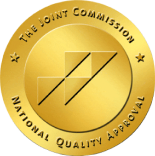The human body and brain are designed for survival. When trauma occurs, especially repeatedly or without resolution, it can reshape how the mind and body function.
C-PTSD arises from prolonged or repeated exposure to traumatic experiences, often beginning in childhood. Examples include chronic abuse, neglect, captivity, or ongoing domestic violence.
Trauma is not only psychological; it can affect the body in ways that mimic chronic illness.
Many trauma survivors remain in a prolonged state of arousal or shutdown. This imbalance manifests as:
This hormonal disruption can lead to:
Even without conscious memories, the body can retain the imprint of trauma. In the absence of any real danger, certain sensory cues may trigger intense physical reactions, such as:
Understanding these reactions is key to compassionate and effective trauma care.
When the brain detects a threat of trauma, it instinctively activates the survival response deemed most effective for protection. These responses are not conscious decisions but automatic, deeply rooted reactions shaped by neurobiology.
Commonly observed survival patterns include:
The fight response arises when there is a belief that resistance can ensure safety. This may manifest as:
Over time, unresolved trauma can cause this response to surface inappropriately, leading to conflict or defensive behavior.
Flight is characterized by an intense need to get away. It can show up as:
The nervous system remains in a heightened activation state, never allowing complete rest or stillness.
When neither fighting nor fleeing seems possible, the body may freeze. This can lead to:
This response allows the body to conserve energy while reducing the chance of further harm.
Fawning involves adapting to the needs of others to avoid conflict. It is especially common in those with C-PTSD, where prolonged exposure to trauma teaches that safety comes from placating others.
This pattern can lead to:
Partial hospitalization combines therapeutic structure with intensive support, offering an ideal level of care for trauma recovery.
Below are the key factors that make this model so effective:
Before individuals can engage in intensive trauma processing therapies, they must first reach a level of emotional and psychological stability. Partial hospitalization for trauma recovery provides close clinical monitoring and rapid response to emerging symptoms.
These symptoms are addressed with evidence-based interventions that prioritize:
This intentional focus on symptom management ensures that individuals are not retraumatized when it comes time to explore the root causes of their distress.
In partial hospitalization for trauma recovery, participants attend treatment five to seven days a week for several hours each day. This creates a rhythm that mirrors the consistency of daily life while still offering clinical intensity.
The daily schedule within partial hospitalization for trauma recovery typically includes:
This consistent structure helps ease the sense of unpredictability that often lingers after trauma. As stability grows, individuals can begin to trust their surroundings, their care providers, and most importantly, themselves.
Partial hospitalization for trauma recovery provides integrated treatment approaches that address both trauma symptoms and substance use patterns simultaneously.
Trauma can significantly alter the way individuals interpret the world, leading to persistent negative thought patterns, such as:
In partial hospitalization for trauma recovery, CBT is utilized to help individuals identify these unhelpful thoughts and evaluate them through a more realistic and compassionate lens.
DBT in partial hospitalization for trauma recovery typically involves a combination of individual sessions and skills-based groups focused on four core areas, including:
The ongoing practice of DBT techniques in a supportive environment strengthens skill retention and adaptability. The structured, experiential format enables participants to internalize healthier coping strategies and apply them to a range of situations.
DBT fosters a validating therapeutic space that acknowledges the pain of trauma while encouraging constructive behavioral change.
This dual emphasis on acceptance and growth allows individuals to feel seen and understood while actively working toward lasting emotional regulation and improved relationships.
For many individuals, ambivalence about treatment is a natural part of the recovery process, especially when trauma has created a sense of hopelessness. MI provides the motivational foundation that makes sustainable change possible.
Clinicians help participants explore their reasons for change in a non-judgmental way through:
Through this process, resistance often transforms into willingness, and uncertainty becomes a pathway to growth.
Trauma must be processed not only through language but through sensation. Targeted interventions can support nervous system regulation and facilitate the reintegration of mind and body.
By focusing on these subtle physiological cues, SE helps the nervous system complete its natural processing cycle and restore equilibrium.
Grounding exercises help individuals reorient to the present and create a sense of immediate safety during partial hospitalization for trauma recovery. These exercises can be physical, such as touching a textured object, or sensory-based, like naming things in the environment by color, shape, or sound.
In partial hospitalization for trauma recovery, grounding is taught as a proactive skill, not just an emergency response. The approach reinforces autonomy and equips individuals with practical strategies for managing distress in and outside treatment.
Each aspect of care within this program is built on a foundation of:
The goal is to not only support sobriety but also to address the root causes of substance use, creating sustainable pathways toward wellness and self-confidence.
Treatment within the trauma-focused PHP is tailored to the individual. Every person carries a unique story, and therapy at PCTD reflects this individuality.
Our clinicians work closely with clients to develop personalized plans that honor their lived experiences, values, and goals.
Care is delivered with attunement to each individual’s pace and comfort level. Our goal is to meet each client exactly where they are, every step of the way.
PCTD’s trauma-informed care is rooted in a strength-based philosophy. This approach honors each individual’s resilience and seeks to amplify it.
Rather than defining clients by what has happened to them, the clinical team works to help them reconnect with their innate capacity for healing and growth.
Through this lens, healing becomes an active, hopeful process rather than a passive response to pain.
The treatment team at PCTD is composed of licensed therapists, medical professionals, and dedicated support staff, all deeply grounded in trauma-informed care.
Their work is guided by expertise and a deep commitment to cultural humility, emotional safety, and truly seeing the whole person.
Ongoing professional growth and self-reflection are central to how we work, helping us deliver care that is:
Curious how our trauma-informed PHP can support your healing journey? You don’t have to navigate this path alone.












